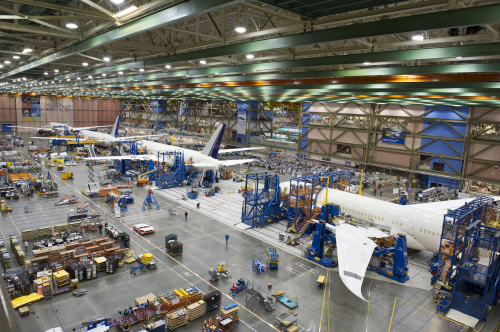

Boeing and BMW are both using carbon fibre composite in their latest models. Boeing's 787 Dreamliner entered service in 2011. Its construction is 50% carbon composite, including the fuselage and wing. As of November 2012, 35 787s had been delivered to eight airlines and the programme had more than 800 unfilled orders with 58 customers worldwide. Boeing says it is on track to produce 10 aircraft per month by late 2013 (the current rate is five aircraft per month). (See Boeing increases 787 production.)
BMW will introduce two vehicles with passenger compartments made of carbon fibre reinforced plastic (CFRP) in 2013 (the BMW i3 and i8). According to BMW, this is the first time this high-tech material has been used on such a large scale in automotive production.
Recycling carbon composite material at point of use and the end of product life is thus critical to both companies.
"This collaboration agreement is a very important step forward in developing the use and end use of carbon fibre materials," says Larry Schneider, Commercial Airplanes vice president of Product Development, who represented Boeing at the signing of the agreement in Seattle, Washington. "It is especially important that we plan for the end of life of products made from carbon fibre. We want to look at ways to reclaim and reuse those materials to make new products. Our work with BMW will help us attain that goal."
Boeing manufactures several aircraft, including the 787, in Everett, Washington. In 2011, in a joint venture with carbon fibre manufacturer SGL, BMW opened a plant in Moses Lake, Washington, that will provide carbon fibre for its i3 and i8 models. (See BMW/SGL joint venture opens US carbon fibre plant.)
"Boeing for us is a suitable partner for collaboration in the field of carbon fibre," explains BMW AG for Development Board Member Herbert Diess. "Boeing has many years of extensive experience using carbon fibre in the field of aviation, while the BMW Group has earned a significant competitive advantage through its use of special manufacturing methods for series production of carbon fibre parts. Through this cooperation, we can merge know-how between our industries in the field of sustainable production solutions."
As part of the collaboration, Boeing and BMW will also share carbon fibre manufacturing process simulations and ideas for manufacturing automation.
- Boeing is part of the Aircraft Fleet Recycling Association, which works to promote the salvaging and recycling of aircraft parts and materials. In August 2012, it was announced that carbon fibre reclaimed from Boeing 787 production is being used by Werner Paddles of Sultan, Washington, to manufacture thermoplastic composite kayak paddles. (See Kayak paddles feature carbon fibre recycled from aircraft production.)





